Resurrecting the Dead: Bringing New Life To Old 29″er Wheels – by Grannygear
I remember that day when Boost, that new ‘standard’ for MTB hub spacing, was rolled out to the market place. I wore black in mourning for all the wheels I had in the garage that would no longer fit new mountain bikes, new bikes that would inevitably be built to boost hub spacing.
Most of those wheels found their way onto odd mountain bikes here and there or I sold them or just set them aside. But when gravel bikes came out, they debuted most often with a 142×12 rear through axles and a 100x15mm front through axles which just happened to be what most all the wheels I had from the ‘old days’, old days being, what…two to five years ago? That is eons in bike industry timelines. When I got my Gen 2 Salsa Warbird, I used a set of FSA XC MTB 29″er wheels from bygone times. They had the right axle set-up and were about 1800g or so, 21mm wide internal (remember when that was a wide rim?), and so strong that no gravel bike use was going to hurt them. It worked.
Since then new wheels have come my way and the FSA 29″er wheels are hanging on a hook, still as good as they were new. Sad, they are. And they have brothers.
Lately it got me thinking that there are quite likely a metric ton of old 29″er wheels out there that have great possibilities for modern gravel bike use. Now as soon as I write this, I am sure that some demonic force in the bike industry is rushing to introduce ‘Boost-G’, a new standard for gravel that allows for 400mm chain stays, 14 speeds, and is 2.5mms wider but only on one side of the hub. (Editor’s Note- Cannondale already does this, kind of, with MTB drivetrains, which they call “AI Offset“) But I digress. Lets look at the possibilities by taking a sampling of what I have in the garage and see what challenges we might encounter adapting them for a modern gravel bike and how to overcome those challenges.
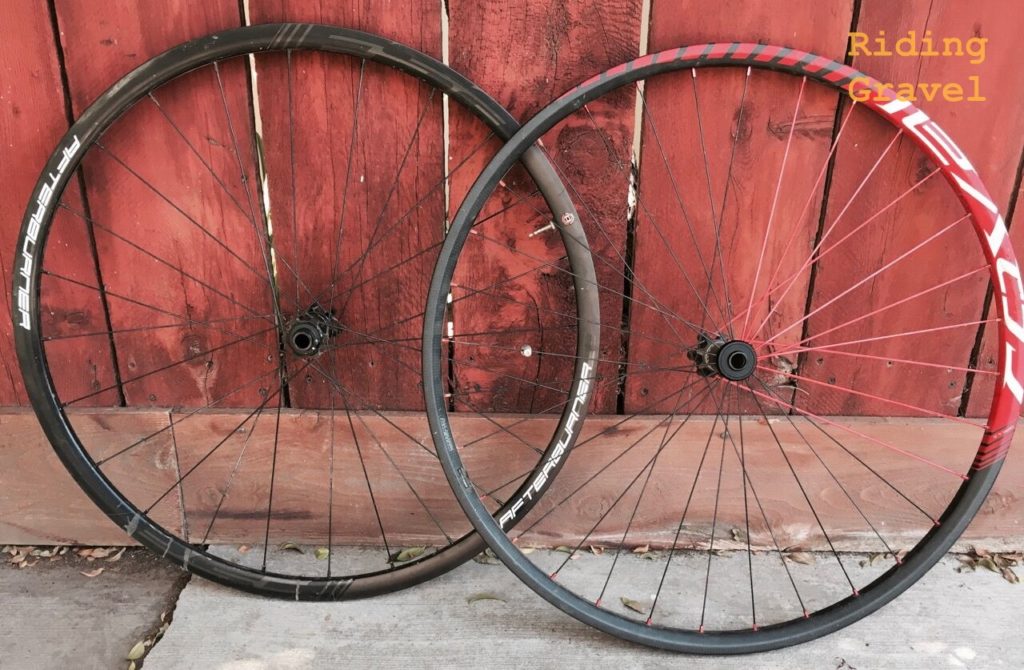
FSA Afterburner 29er wheels: I already mentioned them, but these are pretty typical of a wheel that was not too high end, maybe cost $600-$800 dollars retail, was 1700g-1800g, and 21mms wide internal. Spoke count might be as high as 32 but often, at least for XC or light trail riding, 28 and even 24 spoke counts were not unheard of. Tubeless ready of course.
These wheels were built in a period of time when 11spd MTB was happening, so they were dished for 11spd cassettes and came with a small freehub spacer if you were running 10 speed. In all cases here I am talking about 10/11 speed cassettes of the Shimano type…basically what all cassettes are in a multiple chain ring set-up.
The hub spacing is 142×12 rear and that is what a modern gravel bike is if it is a through axle type. But the front could be tricky. A lot of early gravel bikes mimic MTB in that they were 15×100 through axle standard. That was fine for most of the early gravel bikes. Bolt ‘em up! But as things have matured in gravel bikes, they moved to the road standard front hub of 12x100mm. The axle diameter is smaller so no-go for the old front wheels. But there are options here too.
First of all, many manufacturers can supply new axle end caps that will reduce the front hub to 12mm. If so, that is an elegant solution. It might be $50.00, but it retains factory quality and factory performance. In some cases the swap might require changing the front axle if the hub design was not built around swappable end caps. In the case of the Afterburners, FSA does still make end caps for the wheels I have and that might be true across other older wheels they sold.
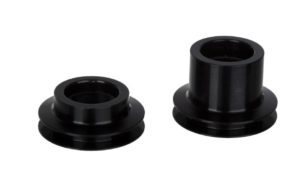
Now what about a wheel that you cannot get end caps for, or never came with end caps to begin with? There might still be a way. A 12mm/hub axle/fork ‘dropout’ interface has a diameter of 19mms or so. Many 15mm axle setups are bigger than this, like maybe 21mms in diameter, so it will not fit into the fork correctly and would damage things if you made it fit. But many wheels that were 15mm through axle had end cap/outer axle outer diameters of 19mm and will fit into a fork designed for 12mm through axle. That means you only need to adapt the smaller, thinner axle to work inside the 15mm internal diameter (ID) hub and bearings. A quick search on the internet, like Amazon, will show scads of aluminum or carbon axle/bearing inserts that slide into the old hub and take up the slack between the 15mm ID and the 12mm OD of the two mismatched parts. Insert this long ‘spacer’ into the old hub, put it into the fork and use the bike’s stock 12mm T/A. Good to go.
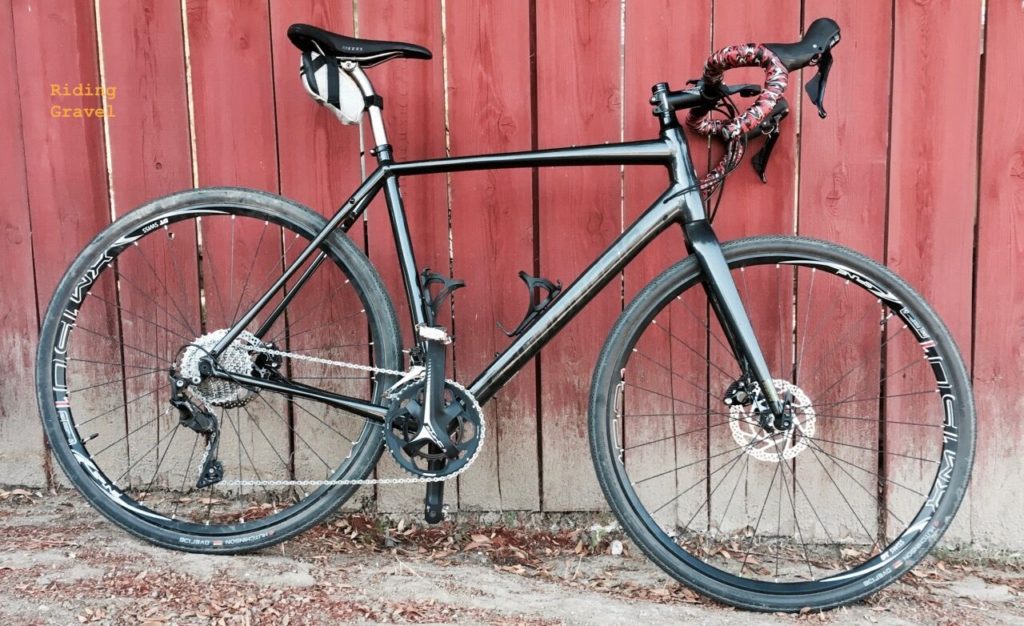
DT Swiss XM 1501 Spline 1 wheels:
Now these were more expensive wheels when they were new. These were about a grand a pair. They are under 1700g and about the same inner width as the FSAs. These are very nice wheels. The hubs are the 240s type. They have the bomber Star Ratchet drive system which is about as strong and user friendly as they come. It’s an end cap system that they still support, so swapping to 12mm is simple but not cheap. I paid about $50.00 for two end caps from DT Swiss since the original 15mm ones were 21mm in diameter at the fork interface.
But basically, for $50.00 I now have a very, very solid pair of gravel bike wheels that would give miles of use. Well, almost, at least. They were originally designed with a 10 speed freehub, so that is an issue. Every new gravel bike above the lowest price point is 11 speed. What to do? Well, there are two options. DT Swiss has an 11 speed freehub body and end cap set that installs by hand and will let you run an 11 speed, Shimano type cassette. Now of course the wheel will not be centered in your frame anymore so you can either have the wheel re-dished, assuming there are enough threads in the spokes to make this happen, or just run it slightly off center, as it’s just a few mms. That is option #1.
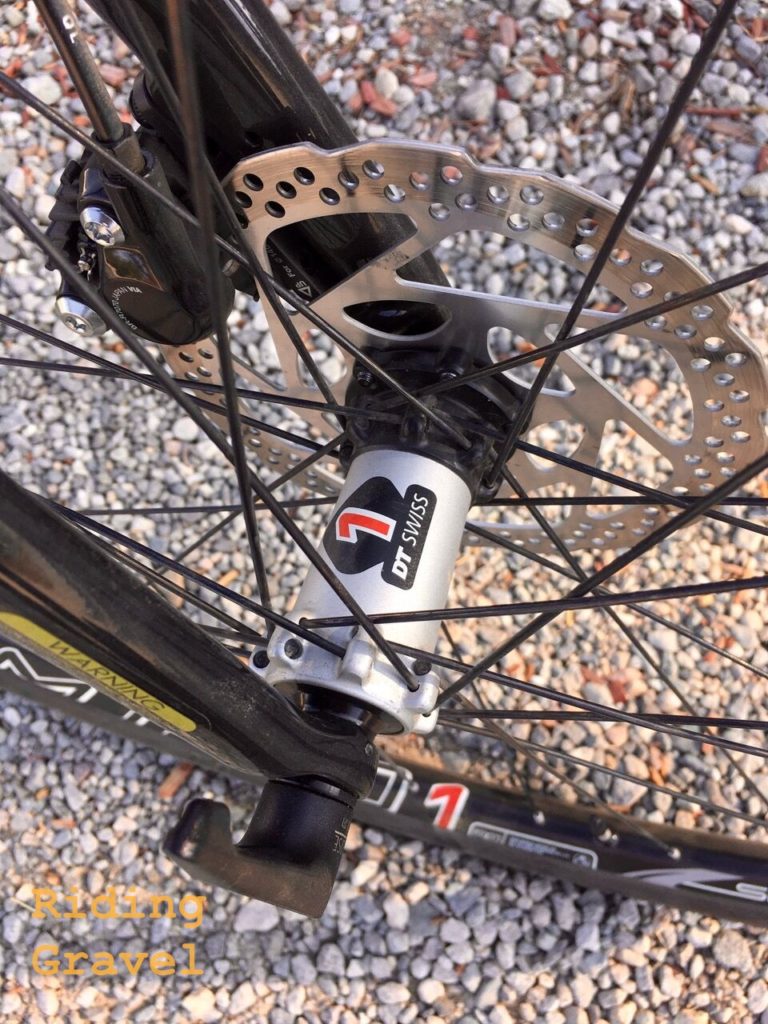
Option #2 is even easier but does have some limitations. When Shimano designed some of the new 11 speed cassettes, they did something that works in our favor. The 11th cog, that being the top one on the stack, is dished and hangs out over the spokes a bit. So as far as the freehub is concerned, the actual width of the mounting surface of the cog assembly is no wider than the 10 speed cassette was. That means that you can slide some Shimano 11spd cassettes onto an older 10spd freehub and just snug it down. Voila!
Now the catch is that it is only the 11-34 and above that works this way. So no-go on the 11-32 or smaller cassettes. 11-34, 11-40, etc….all good. Pity that they do not make an 11-36 or 11-38 11spd cassette. So when I installed these 10 spd DT Swiss Spline 1 wheels on the Topstone I just took the stock 11-34 105 cassette and re-used it. Very nice, that.
Roval Carbon XC wheels:
Now you want light wheels on a budget? Ok then, bunk mate. Check these out. Under 1400g for a carbon gravel wheel, 21-22mm internal width, tubeless ready, with a DT Swiss 240s based hub center of gooey goodness.
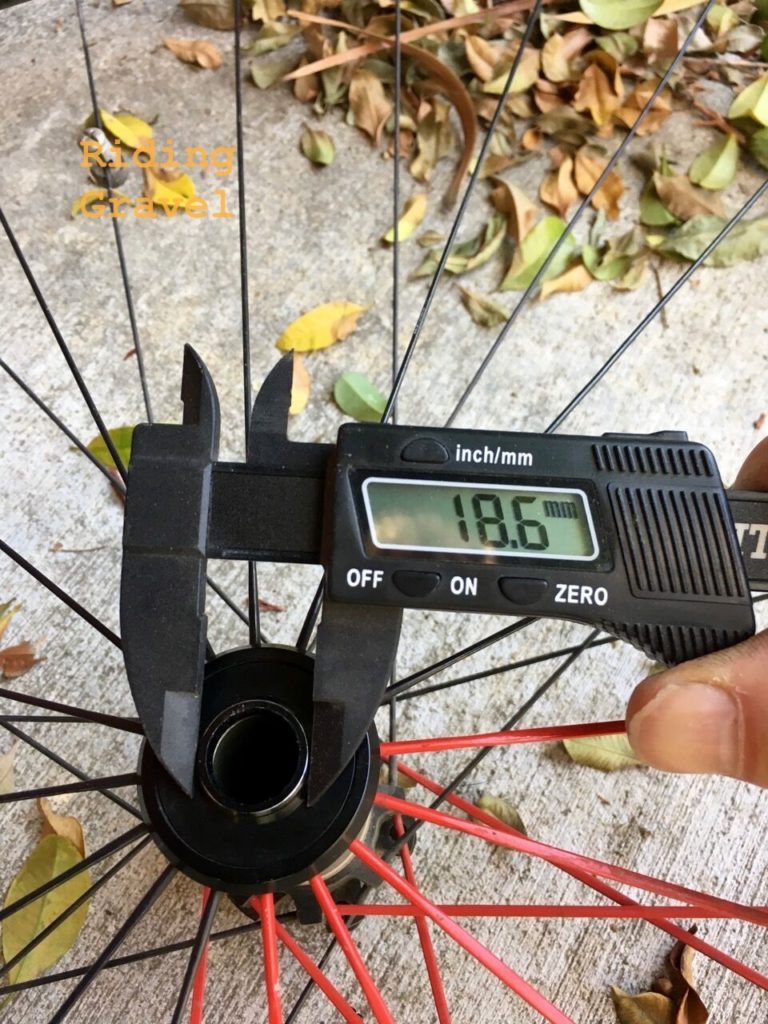
Even better is the fact that these Roval 15mm end caps are only 19mm in outer diameter so this wheel slides right into a 12mm fork. I would only need to get one of those $11.00 inner axle spacers off the web and I am in like Flynt. Or Flynn. Or whoever that is. Roval end caps on the front hub are proprietary, so checking with Specialized might reveal a factory end cap solution…or not.
These wheels are only 10speed ready as well, so since it is DT Swiss in the rear hub-side of things, end caps and free hubs can be swapped and the wheel re-dished or you could run the correct Shimano cassette as we talked about.
Is that it? Not quite. All of these wheels will be 6 bolt rotor mounting. Centerlock will not be the case here. So that means you will need to buy new rotors if your bike came with Centerlock hubs. You can adapt 6 bolt rotors to Centerlock but not the other way around. I have not found high end Shimano rotors on the MTB side that are not Centerlock. Maybe I am missing that, but something like a simple, all steel rotor in 160mm will do. A Deore level Shimano SM-RT56 for instance. And of course there are fancy rotors from folks like Hope or eBay items if you prefer.
Now why would we want to do this? Why go to all this trouble? Well, those Roval carbon wheels I have were likely 2 grand when they were new…maybe more. What would someone think they are worth now? Let’s see…hmmm…non boost. 10 speed. Used. Aw…how ‘bout you give me 100 bucks and we call it even? Even if you had to rebuild the spokes/nipples, which would allow you to re-center the wheels to 11 speed spacing, well you could likely do all that and buy the DT Swiss parts for under $500.00 bucks easy. For 1400g carbon wheels that are darn strong and bulletproof too? Bargain.
What might the FSA wheels be worth to someone? Likely nothing. Take it off my hands, please. And that is not a reflection on the quality of the wheels, but rather the perceived value in the eye of the owner. Not carbon. Not boost. Did not pay a lot for them anyway years ago. Yeah….dunno…$20.00 okay with you? And even if you are in for $200.00, let’s say. If you know that end caps are out there or the axle option is there, which is the case for FSA? Deal! The biggest thing to worry about is a wheel that is too old to have ever been 11spd ready (freehub too narrow) and there are no upgrades available. Of course then there is always the Shimano cassette trick.
It is a great thing, is it not? Getting good use out of solid bike parts once thought to be passé? Makes me want to walk by garages in my town, pushing a cart and shouting “bring out your dead!”.


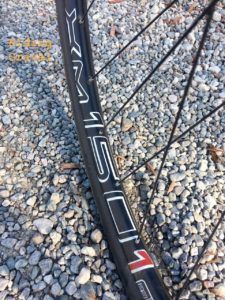
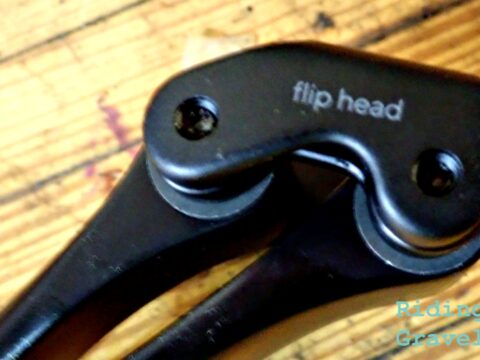
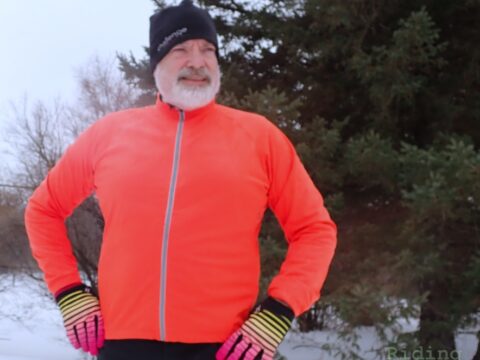
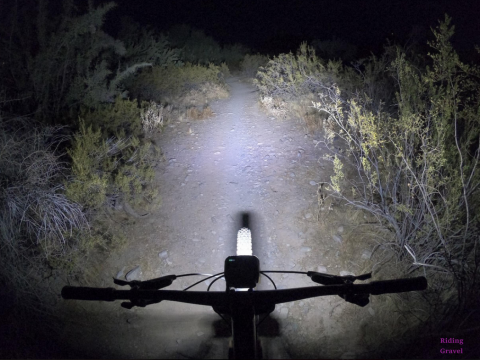

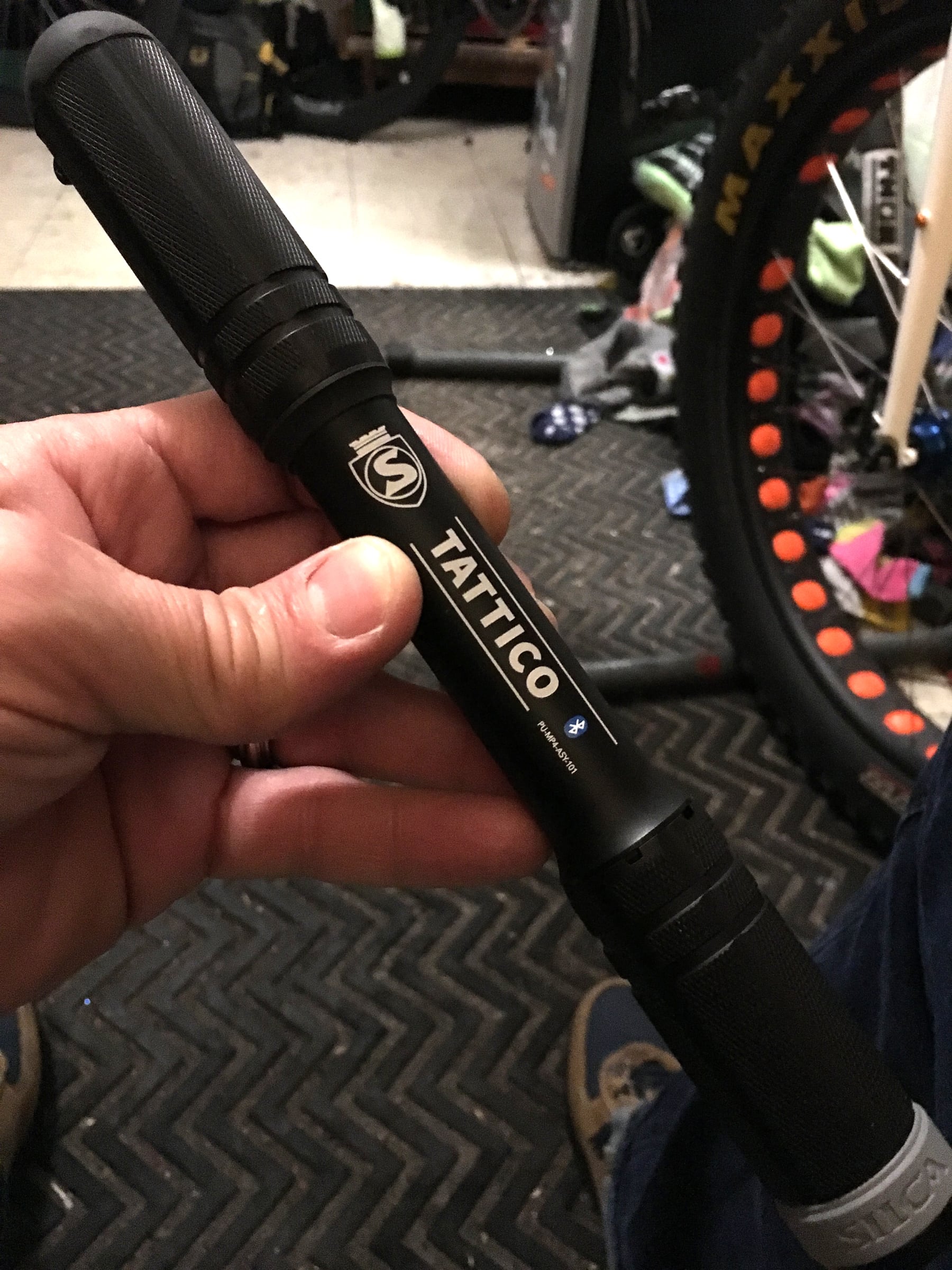
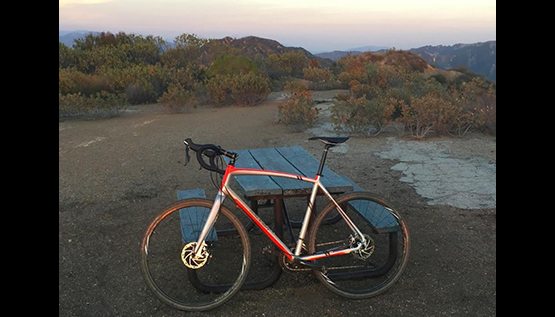
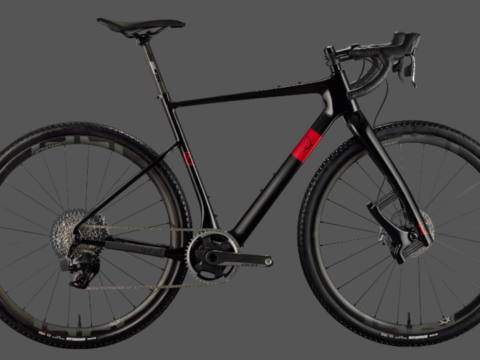
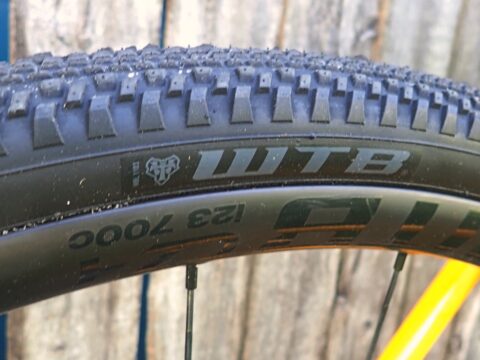

One note on the Roval wheels – I picked up pair for my DK200 build (Niner BSB) and the front hub flange rubs inside the fork near the dropout. This was fixed quickly by picking up a new front hub and rebuilding the wheel, which only took about a week. Also, many 29er wheels are rated for 45 psi max, so keep this in mind if you’re planning to run higher pressures for pavement-heavy routes.
Same here. Flange rubs on right hand fork leg. I placed a 1 mm spacer on the right hand side dropout to get around this. Works fine but not everybody will like this.
Awesome article, as I have purchased mtn bike wheels instead of road disc wheels for my gravel bike since I’ve had a gravel bike! One observation and one question:
1) I have not had any luck with 12mm endcaps for Roval front hubs. 15mm or QR seem to be the only options I’ve run across on a couple wheelsets (Control Carbon and Traverse Fattie; both non-boost of course)
2) As for the re-dishing, I’m not understanding the issue totally. For DT Swiss, isn’t it just a freehub body and drive side endcap change? If that’s the case, and the non-drive side endcap doesn’t change, then the wheel would stay centered in the frame. It’s been a while since I did this, so I was just looking for clarification.
@Chris King…interesting. Too bad too. I did test fit the ones I have and did not immediately see an issue, but I never ran them as they need a rebuild…corroded alloy nipples. I wonder if the PSI limitation there is not the tire rather than the rim? Anyway, I cannot imagine running so small a tire that I would run over 45psi in it but maybe so. I run 50-60 on my road bike with 30s and 35psi in my 38s. Still it’s an interesting point to consider.
@DT…When I originally had the 11spd conversion on the DT Swiss wheels, that does not center the wheel, it only allows for the extra cog (wider freehub). Guitar Ted likely could explain that better than I. All that spacing stuff makes me dizzy.
gg
Spot on article! I have 4 pairs of Stans Crest 29″ wheels for gravel and cx duties. Their newer mk3 wheels come with an 11 speed road freehub which is a bonus too. It’s so easy to find barely used sets in the 200-300 range and they are as light as a lot of carbon fiber options. I needed frequent trying on the set I used for mt biking, but the gravel and cx sets barely need more than an annual tune up.
The highest end Shimano 6-bolt rotors are the XT level RT-86. They come in 160mm and are made to Ice Tech standards.
@KR…excellent. Thanks!
gg
Interesting finding this now. I did exactly the same, except with far cheaper 12×142 MTB wheels from Fulcrum (Red Zone 7, I think). Reason was simply that the available “specialist” gravel wheelsets up until a couple of years ago were exclusively overpriced junk. It seemed screamingly obvious that a €300 pair of 29er wheels with straight pull spokes, and wider, more solid rims, yet weighing only about 100g more than the Fulcrum Racing 4 I have on my road bike, were an incredibly good value option.
The problems? The “special” MTB freehub and spoke dishing. I only found out about that when the wheels arrived and I tried to mount a road standard cassette. So you have far fewer options for cassettes (basically there is one only from Shimano). And I had to get the 12mm end caps for the front. None of this was a problem. I have no idea if such parts are still available, however. But apart from their habit of eating bearings once a year (this seems to be across the board with Fulcrum), the wheels are fine.